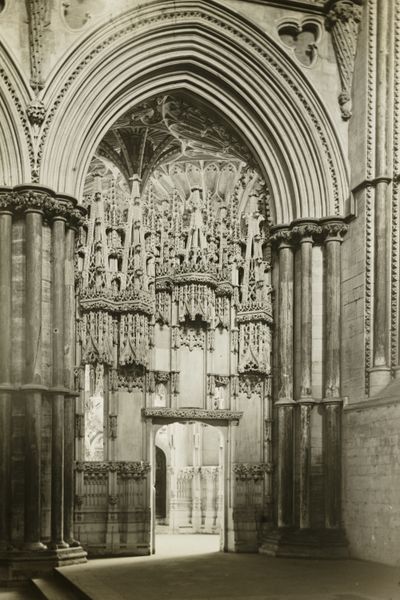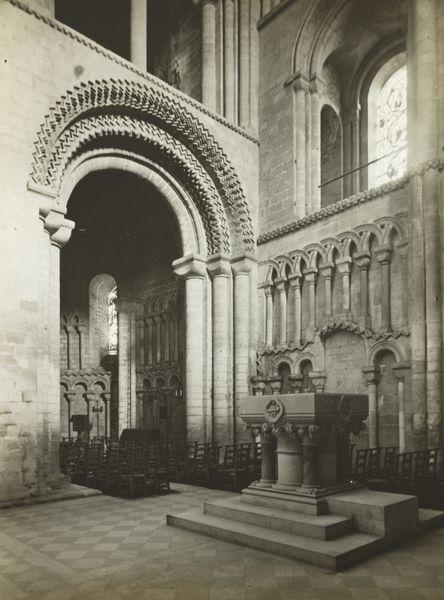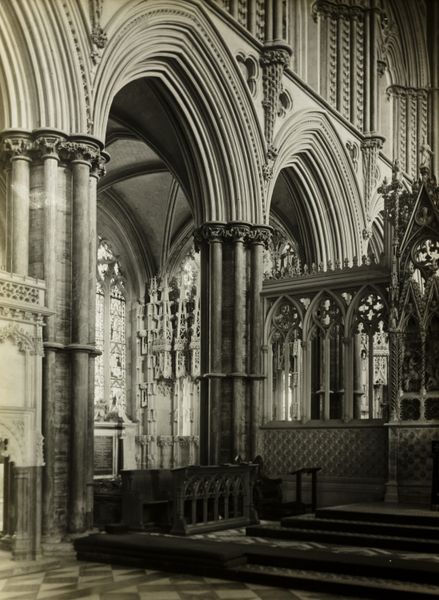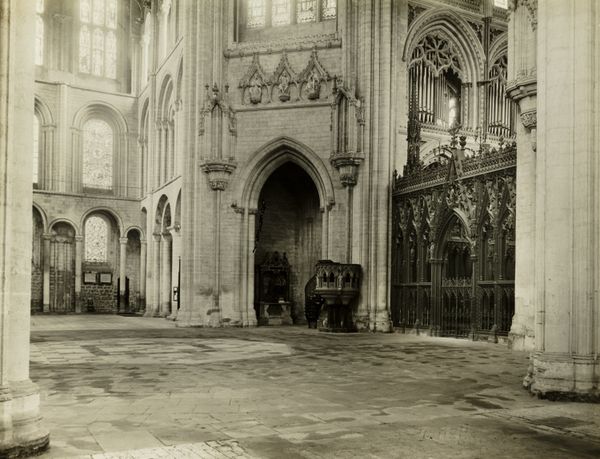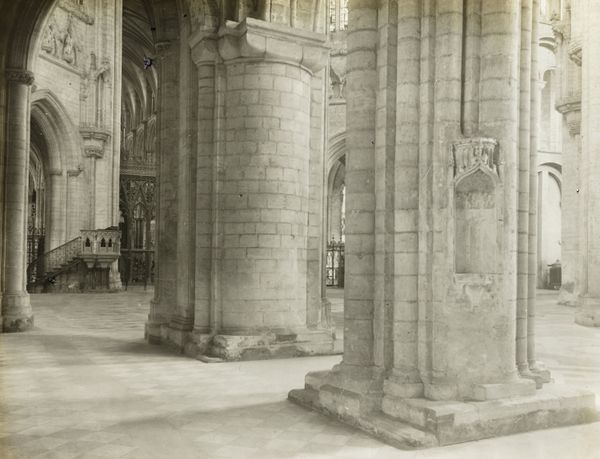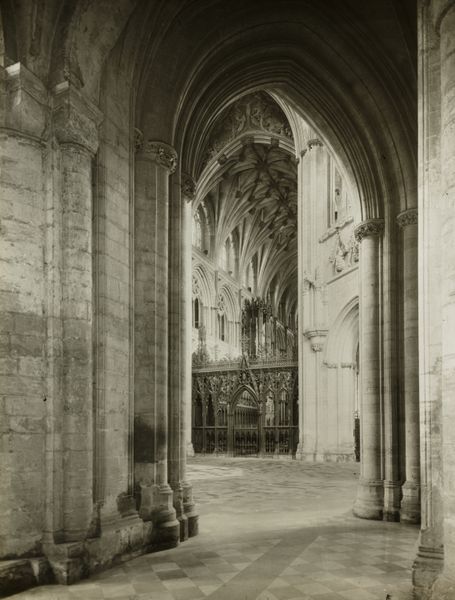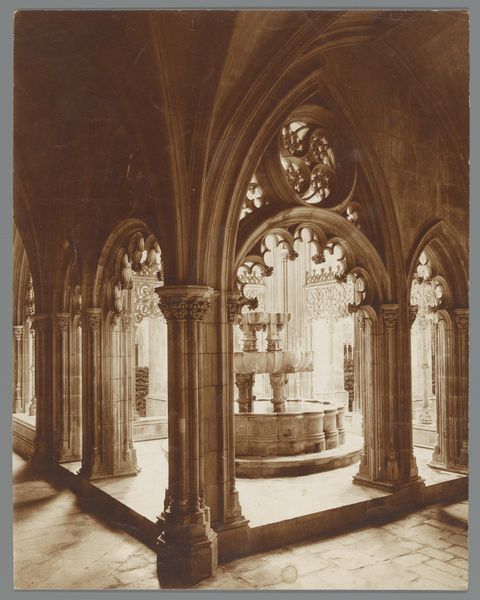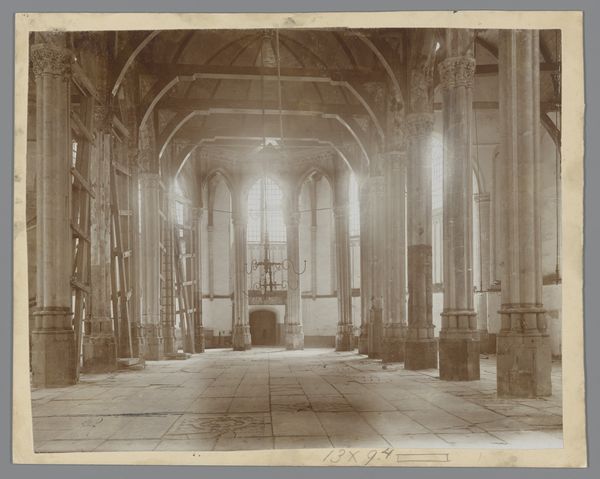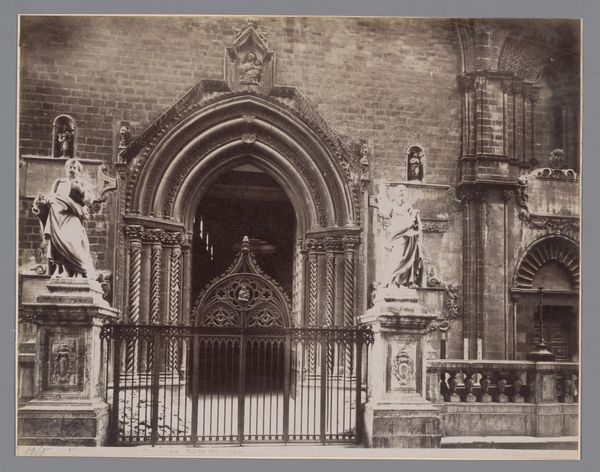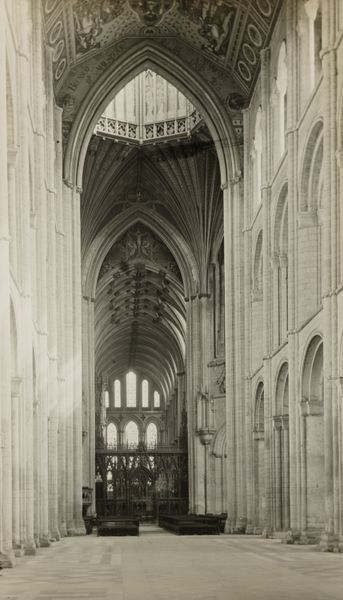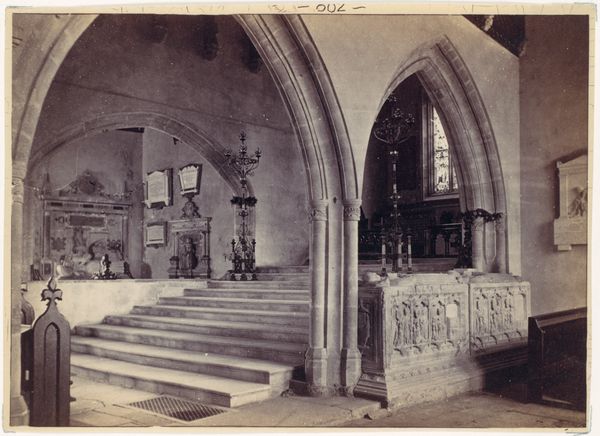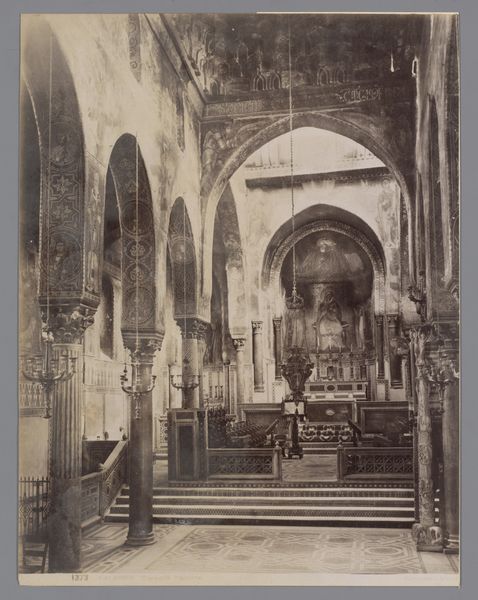
photography, architecture
#
16_19th-century
#
medieval
#
pictorialism
#
landscape
#
form
#
photography
#
geometric
#
line
#
architecture
Dimensions: 8.2 × 8.2 cm
Copyright: Public Domain
Editor: This photograph, "Ely Cathedral" by Frederick H. Evans, taken around 1891, is just stunning. The level of detail he captures in the stonework is amazing, but the overall effect is so somber. How do you interpret this work? Curator: Evans truly understood the cathedral, not just as architecture but as a vessel for collective memory. Consider the arches: they are echoed throughout history, representing shelter, passage, and even spiritual ascent. In the pictorialist movement, forms, lines, and the very architecture carry symbolism that the artist enhances and distills, imbuing the photographic art with deeper historical meaning. Editor: So you’re saying it’s more than just a pretty picture of a cathedral? It's about what the cathedral *represents*? Curator: Exactly. The cathedral itself embodies centuries of cultural and religious evolution. Notice how Evans uses light and shadow—does the lighting itself remind you of anything? Editor: It almost looks like a stage, doesn't it? As though we’re waiting for something important to happen. Curator: Precisely! Cathedrals are stages for rituals, for community gatherings, for life's major events. The geometric precision alongside the landscape style reinforces a timeless architectural tradition. The symbols are everywhere. Editor: I never thought about how much history could be packed into just one building, or in this case, one photograph of a building. Curator: Evans understood this power. He knew that the images we create shape how we remember. This photograph makes you think, feel, and wonder.
Comments
No comments
Be the first to comment and join the conversation on the ultimate creative platform.
